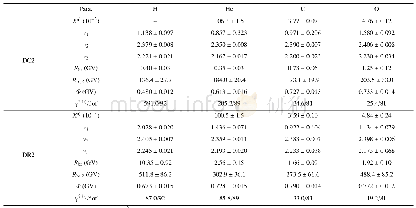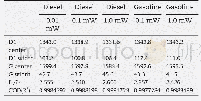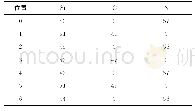《Table 3–Fitting results of the impedance spectra shown in Fig.8 obtained in the AEM systems accordi
 提示:宽带有限、当前游客访问压缩模式
提示:宽带有限、当前游客访问压缩模式
本系列图表出处文件名:随高清版一同展现
《Comparative studies on fouling of homogeneous anion exchange membranes by different structured organics in electrodialysis》
Five organic compounds,sodium methane sulfonate(MS),sodiumbenzenesulfonate(BS),sodium6-hydroxynaphthalene-2-sulfonate(NSS),SDS,and SDBS,were used as model foulants in the experiment.All the organics have different structures,but all have a negatively charged functional group.The five organic compounds include aliphatic and aromatic organics,short-chain aliphatic and longchain aliphatic organics,and monocyclic aromatic and polycyclic aromatic organics.These were used as model foulants,but at the same time they could represent the small aliphatic and aromatic organics present in coking wastewater.The fundamental properties of these organics are shown in Table 1;the critical micelle concentration(CMC)of SDS and SDBS in 0.1 mol/L NaCl solution is also provided.A commercialAEM(NEOSEPTAAMX)preparedfrom chloromethyl styrene and divinylbenzene and a cation exchange membrane(CEM,NEOSEPTA CMX)were obtained from Astom Corp(Tokyo,Japan)and the properties of the membranes are shown in Table 2.Other reagents used to prepare the solutions in the experiments were NaCl(A.R)and Na2SO4(A.R).All solutions were prepared using ultra-pure water(18.2 MΩ/cm,Milli-Q,Millipore).
| 图表编号 | XD0033519700 严禁用于非法目的 |
|---|---|
| 绘制时间 | 2019.03.15 |
| 作者 | Zhijuan Zhao、Shaoyuan Shi、Hongbin Cao、Yujiao Li、Bart Van der Bruggen |
| 绘制单位 | Division of Environment Technology and Engineering, CAS key Laboratory of Green Process and Engineering, Beijing Research Center of Process Pollution Control, State Key Laboratory of Biochemical Engineering, Institute of Process Engineering, Chinese Acade |
| 更多格式 | 高清、无水印(增值服务) |
查看“Table 3–Fitting results of the impedance spectra shown in Fig.8 obtained in the AEM systems according to the equivalent”的人还看了
-

- 表4 Ni-Ti N纳米镀层的电化学阻抗谱拟合参数Table 4 Fitting parameters from electrochemical impedance spectra of Ni-Ti N nanocoatings





